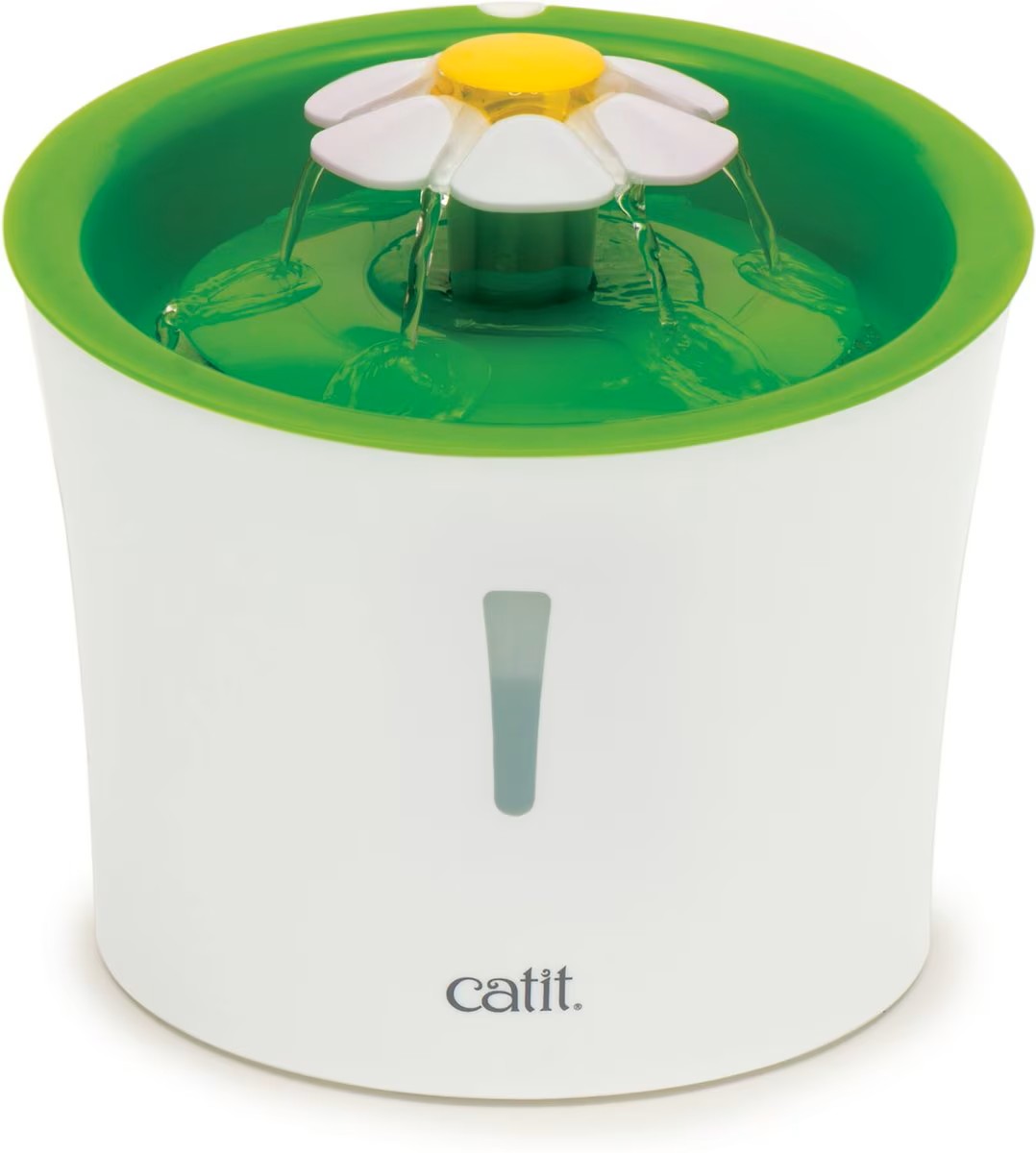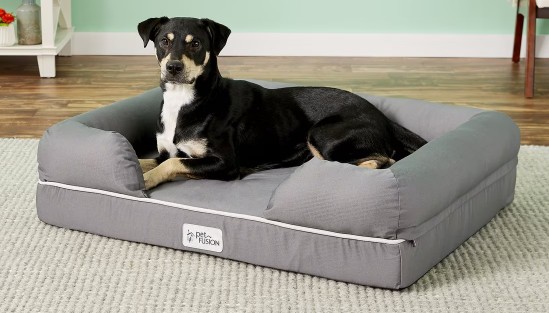Why Your Cat Won't Drink Water & How to Fix It: Complete Hydration Guide
Discover why cats are naturally poor drinkers and learn proven strategies to increase your cat's water intake. From fountain selection to placement tips, ensure your feline stays properly hydrated.

If you've ever watched your cat ignore their water bowl while desperately trying to drink from your faucet, you're not alone. Cats are notoriously poor drinkers, and this behavior stems from thousands of years of evolution. Understanding why your feline friend avoids their water bowl—and knowing how to fix it—is crucial for their long-term health and well-being.
Proper hydration is essential for cats, affecting everything from kidney function to urinary tract health. Dehydration in cats can lead to serious health issues, including kidney disease, urinary blockages, and digestive problems. The good news is that with the right strategies and products, you can encourage your cat to drink more water and maintain optimal hydration.
Why Cats Are Naturally Poor Drinkers
To understand your cat's drinking habits, we need to look at their evolutionary history. Domestic cats descended from desert-dwelling ancestors who obtained most of their water from prey. Wild cats typically get 70% of their water intake from food, not from drinking water directly.
Evolutionary Factors
Your house cat's ancestors, primarily the African wildcat, evolved in arid environments where water sources were scarce and potentially dangerous. These cats developed several adaptations:
- Concentrated urine: Cats can concentrate their urine more than most mammals, conserving water
- Low thirst drive: They don't feel thirsty until they're already mildly dehydrated
- Moisture from prey: Fresh prey contains 60-70% water, meeting most hydration needs
- Cautious drinking: In the wild, water sources could expose cats to predators
Modern Diet Challenges
Today's domestic cats face a hydration challenge that their ancestors didn't: dry kibble diets. Commercial dry cat food contains only 6-10% moisture, compared to the 70% moisture content of natural prey. This dramatic difference means modern cats must drink significantly more water to stay properly hydrated.
Hydration by the Numbers
Cats need approximately 3.5-4.5 ounces of water per 5 pounds of body weight daily. A 10-pound cat should consume about 7-9 ounces of water per day, including moisture from food.
Signs Your Cat Isn't Drinking Enough Water
Recognizing dehydration early is crucial for your cat's health. Cats are masters at hiding illness, so subtle signs often indicate a problem before obvious symptoms appear.
Physical Signs of Dehydration
- Skin tent test: Gently pinch the skin between your cat's shoulder blades. If it doesn't snap back immediately, your cat may be dehydrated
- Dry gums: Healthy cat gums should be pink and moist, not sticky or dry
- Sunken eyes: Dehydrated cats may have slightly sunken or dull-looking eyes
- Lethargy: Decreased energy and activity levels
- Loss of appetite: Dehydration can reduce interest in food
Behavioral Changes
- Increased sleeping: Spending more time resting than usual
- Reduced grooming: Less interest in maintaining their coat
- Seeking alternative water sources: Drinking from faucets, toilets, or plant saucers
- Urinary changes: Less frequent urination or darker, more concentrated urine
Long-term Health Consequences
Chronic dehydration in cats can lead to serious health problems:
- Kidney disease: The leading cause of death in senior cats
- Urinary tract issues: Crystals, stones, and blockages
- Constipation: Difficulty passing stool due to lack of moisture
- Dental problems: Reduced saliva production affects oral health
Common Reasons Cats Avoid Their Water Bowls
Understanding why your cat avoids their current water setup is the first step in solving the problem. Cats are particular creatures with specific preferences that, when unmet, can lead to reduced water intake.
Water Bowl Issues
Bowl Material and Cleanliness
Plastic bowls are often the culprit behind water avoidance. Plastic can retain odors and bacteria, even after washing, creating an unpleasant drinking experience. Additionally, some cats develop plastic allergies that cause chin acne or irritation.
Stainless steel and ceramic bowls are much better options as they don't retain odors and are easier to keep clean. However, even the best bowls need daily cleaning to prevent biofilm buildup—that slippery coating that develops on surfaces in contact with water.
Bowl Size and Shape
Many cats dislike deep, narrow bowls that cause their whiskers to touch the sides. Whisker fatigue is a real phenomenon where overstimulation of sensitive whiskers creates stress and discomfort. Wide, shallow bowls allow cats to drink comfortably without whisker contact.
Water Quality and Freshness
Stale Water
Cats prefer fresh, moving water over stagnant water. In the wild, moving water is generally safer to drink than still water, which may harbor bacteria or parasites. Water that sits in a bowl for hours develops a stale taste and odor that cats find unappealing.
Chemical Taste
Many cats are sensitive to the chlorine and other chemicals in tap water. If your water has a strong chemical smell or taste, your cat will likely avoid it. Some cats also prefer room temperature water over cold water straight from the tap.
Location and Environment
Proximity to Food
In the wild, cats don't typically eat and drink in the same location. Placing water bowls next to food can reduce water consumption. Cats instinctively avoid drinking near their food source to prevent contamination.
High-Traffic Areas
Cats prefer quiet, safe locations for drinking. Water bowls placed in busy hallways or near loud appliances may be avoided. Your cat needs to feel secure while drinking, as this is a vulnerable position in the wild.
Multiple Cat Households
In homes with multiple cats, competition for resources can reduce water intake. Dominant cats may guard water sources, preventing other cats from drinking adequately. The general rule is one water source per cat, plus one extra.
Proven Strategies to Increase Your Cat's Water Intake
Now that we understand why cats avoid water, let's explore effective solutions to encourage proper hydration. These strategies range from simple bowl changes to more advanced hydration systems.
1. Upgrade to a Water Fountain
Water fountains are one of the most effective ways to increase cat water consumption. The movement, sound, and freshness of fountain water appeal to cats' natural preferences and can significantly boost daily water intake.
Benefits of Water Fountains
- Continuous circulation: Keeps water fresh and oxygenated
- Filtration: Removes impurities and improves taste
- Movement attraction: Appeals to cats' instinct to drink from streams
- Multiple drinking surfaces: Accommodates different drinking preferences
- Larger capacity: Reduces refill frequency
Top Recommendation: Catit Flower Water Fountain
After extensive testing and research, the Catit Flower Water Fountain stands out as an exceptional choice for encouraging cat hydration. This innovative fountain addresses multiple factors that affect cat drinking behavior:
Key Features:
- Three drinking surfaces: Flower top, gentle bubbling, and quiet stream options
- Adjustable water flow: Customize flow rate to your cat's preference
- Triple-action filter: Removes debris, odors, and softens water
- 3-liter capacity: Reduces refill frequency
- Ergonomic design: Comfortable drinking height and whisker-friendly
- Quiet operation: Won't startle nervous cats
The Catit Flower Fountain's unique design allows cats to choose their preferred drinking style. Some cats prefer the gentle bubbling action at the flower top, while others enjoy the flowing stream. This flexibility makes it suitable for households with multiple cats with different preferences.
Customer reviews consistently report 30-50% increases in water consumption after switching to the Catit Flower Fountain. Many cat owners notice their pets drinking more within the first few days of use.
Read our complete Catit Flower Fountain review →
2. Optimize Water Bowl Setup
If you prefer traditional water bowls or want to supplement a fountain, proper bowl setup is crucial for encouraging drinking.
Choose the Right Bowl
- Material: Stainless steel or ceramic only
- Size: Wide and shallow (at least 6 inches diameter)
- Depth: No more than 2 inches deep
- Weight: Heavy enough not to slide around
Strategic Placement
- Away from food: At least 3 feet from food bowls
- Quiet locations: Away from high-traffic areas
- Multiple locations: Several water sources throughout the house
- Elevated options: Some cats prefer drinking from elevated surfaces
3. Improve Water Quality
Filtration Options
If your tap water has a strong chemical taste or odor, consider these filtration options:
- Activated carbon filters: Remove chlorine and improve taste
- Water filter pitchers: Simple and cost-effective
- Bottled water: For cats with extreme sensitivity
- Fountain filters: Built-in filtration with water fountains
Temperature Preferences
Most cats prefer room temperature water, but some enjoy slightly cool water. Experiment to find your cat's preference, and avoid ice-cold water which can be off-putting.
4. Increase Wet Food in Diet
Wet food is one of the most effective ways to increase your cat's overall water intake. Canned cat food contains 70-80% moisture, closely mimicking the natural moisture content of prey.
Wet Food Benefits
- High moisture content: Significantly increases daily water intake
- Better palatability: Most cats prefer wet food texture and taste
- Easier digestion: Moisture aids in digestion and nutrient absorption
- Weight management: Higher water content means fewer calories per volume
Transitioning to Wet Food
If your cat is used to dry food, transition gradually over 7-10 days:
- Days 1-2: 75% dry food, 25% wet food
- Days 3-4: 50% dry food, 50% wet food
- Days 5-6: 25% dry food, 75% wet food
- Days 7+: 100% wet food (or your desired ratio)
5. Add Water to Dry Food
If switching to wet food isn't possible, you can increase the moisture content of dry food by adding water. Start with small amounts and gradually increase as your cat accepts the change.
Water Addition Tips
- Start small: Begin with 1-2 tablespoons of water
- Warm water: Slightly warm water enhances aroma
- Gradual increase: Slowly add more water over time
- Fresh preparation: Prepare fresh for each meal
Special Considerations for Different Life Stages
Kittens
Kittens have higher water needs relative to their body weight and are more susceptible to dehydration. Ensure constant access to fresh water and consider a small, kitten-appropriate fountain.
Senior Cats
Older cats are at higher risk for kidney disease and may have reduced mobility that makes accessing water more difficult. Multiple water sources and elevated bowls can help senior cats stay hydrated.
Cats with Health Issues
Cats with kidney disease, diabetes, or urinary tract issues have increased water needs. Work with your veterinarian to develop an appropriate hydration strategy for cats with medical conditions.
Creating a Hydration Station
For optimal results, create dedicated hydration stations throughout your home. A well-designed hydration station encourages regular drinking and makes water easily accessible.
Essential Components
- Primary water source: High-quality fountain or multiple bowls
- Backup options: Additional bowls in different locations
- Comfortable environment: Quiet, safe, and easily accessible
- Regular maintenance: Daily cleaning and fresh water
Multi-Cat Household Setup
In homes with multiple cats, create several hydration stations to prevent competition and ensure all cats have adequate access to water.
Monitoring Your Cat's Water Intake
Tracking your cat's water consumption helps you identify changes in drinking habits that might indicate health issues.
Simple Monitoring Methods
- Measure daily: Fill water sources with measured amounts
- Track refills: Note how often you refill water sources
- Observe behavior: Watch for changes in drinking patterns
- Monitor urination: Changes in litter box usage can indicate hydration issues
When to Consult Your Veterinarian
Contact your veterinarian if you notice:
- Sudden increase in water consumption: Could indicate diabetes or kidney disease
- Dramatic decrease in drinking: May signal illness or pain
- Changes in urination: Frequency, color, or amount
- Signs of dehydration: Despite adequate water availability
Troubleshooting Common Problems
My Cat Still Won't Drink from the Fountain
Some cats need time to adjust to fountains. Try these strategies:
- Gradual introduction: Place the fountain near their current water source
- Turn off initially: Let them explore the fountain without water flow
- Adjust flow rate: Some cats prefer gentle flow, others like stronger streams
- Clean thoroughly: Remove any plastic odors before first use
Multiple Cats with Different Preferences
In multi-cat households, provide variety:
- Different fountain types: Various flow patterns and heights
- Traditional bowls: Some cats always prefer still water
- Multiple locations: Reduce competition and territorial issues
- Individual preferences: Observe each cat's drinking habits
Maintenance and Care
Proper maintenance of water sources is crucial for encouraging continued use and preventing health issues.
Daily Maintenance
- Fresh water: Replace water daily, even in fountains
- Quick clean: Rinse bowls and fountain surfaces
- Check function: Ensure fountains are working properly
- Monitor levels: Refill as needed throughout the day
Weekly Deep Cleaning
- Disassemble fountains: Clean all components thoroughly
- Replace filters: Follow manufacturer recommendations
- Sanitize bowls: Use pet-safe cleaning products
- Check for wear: Replace damaged components promptly
Conclusion: Ensuring Lifelong Hydration
Proper hydration is fundamental to your cat's health and longevity. By understanding why cats naturally avoid drinking water and implementing proven strategies to encourage consumption, you can help prevent serious health issues and improve your feline friend's quality of life.
Key takeaways for improving your cat's hydration:
- Cats are evolutionarily poor drinkers and need encouragement
- Water fountains significantly increase consumption for most cats
- Wet food provides essential moisture that dry food lacks
- Multiple water sources reduce competition and increase access
- Regular monitoring helps identify health issues early
Remember that every cat is unique, and what works for one may not work for another. Be patient and willing to try different approaches until you find what encourages your cat to drink more water. The investment in proper hydration tools and strategies pays dividends in your cat's long-term health and happiness.
Start with the basics: a high-quality water fountain like the Catit Flower Fountain, fresh water daily, and strategic placement throughout your home. From there, you can fine-tune your approach based on your cat's individual preferences and needs.

